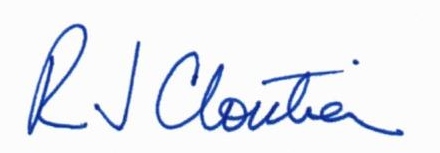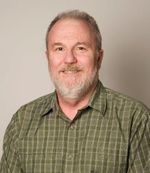Difference between revisions of "Editor's Corner"
(Updated for the June 2019 Version 2.0 rollout.) Tag: visualeditor |
m (Ongoing V2.0 edit) Tag: visualeditor |
||
| Line 5: | Line 5: | ||
Version 2.0 is the first time we are making use of the multimedia capabilities of the underlying MediaWiki platform. In a few places, you will find audio or video recordings to enhance the user experience. We have also implemented Glossary Bubbles. In the past, if you clicked on a word or term that appeared in the glossary, you were sent to that glossary page. You would then navigate back to the originating page. In Version 2.0, a Glossary Bubble opens with the glossary information, allowing you to remain on the originating page. | Version 2.0 is the first time we are making use of the multimedia capabilities of the underlying MediaWiki platform. In a few places, you will find audio or video recordings to enhance the user experience. We have also implemented Glossary Bubbles. In the past, if you clicked on a word or term that appeared in the glossary, you were sent to that glossary page. You would then navigate back to the originating page. In Version 2.0, a Glossary Bubble opens with the glossary information, allowing you to remain on the originating page. | ||
| − | + | In the short 7.5 years the SEBoK has existed, it has received over 1,600,000 visits, with over 3,200,00 page views. Average visits per month for 2019 is running around 35,000, with approximately 80,000 page views per month. The five most popular pages for the first 3 months of 2019 were: | |
| + | # Types of Systems (15,119) | ||
| + | # Stakeholder Needs and Requirements (12,738) | ||
| + | # System Requirements (9,923) | ||
| + | # Types of Models (9,597) | ||
| + | # Reliability, Availability, and Maintainability (8,401) | ||
| + | Another new feature we are introducing in this Version 2.0 rollout is attribution. The initial SEBoK was a community project, and an intentional decision was made to not attribute the authors of any single page. Times change. While the SEBoK is not a traditional peer-reviewed media, new articles are reviewed by the Section Editor, the Managing Editor, and the Editor in Chief before publishing. If any of those individuals need an outside opinion, another expert may be asked to review & edit the new article. So, effective in Version 2.0, if a new article is submitted by 1-3 authors, and the content has only recieved minor edits (not a major rewrite by an editor), the authors names will appear at the bottom of the article. It is the intent to also go back through the existing articles and if any warrant the same attribution, this will be done for the next version (V 2.1). The goal of this change is to increase the stable content of the SEBoK by attracting new authors. | ||
| − | + | So, this Version 2.0 has the following updates: | |
| + | # Glossary Bubbles | ||
| + | # Major article attribution in the form of by-lines in the footer of an article | ||
| + | # Some multimedia content, which will be continued moving forward | ||
| + | # An improved Menu-tree structure | ||
| + | # Section 2 updates | ||
| + | # Section 3 updates | ||
| + | # Updated definitions for System and System of Systems to be consistent with the INCOSE Fellows | ||
| + | # General cleanup | ||
| + | Where are we headed? Good question. We would like to add some new editors to the editorial board. Some of the founders are beginning to move on, and we are looking for fresh participants. As already mentioned, we are looking for new content and authors. We are looking for original multimedia. If you have recorded, or would like to record some items for the SEBoK, please reach out to Nicole Hutchinson or myself and we will help you. Finally, we see more systems engineering applied across engineering disciplines. We would like to have some articles addressing that aspect of systems engineering. | ||
| − | + | That is it for now... hope to see you at the International Symposium in Orlando. If you have some ideas for the SEBoK, or would like to get involved, be sure to find me there and we can have some coffee and chat. Thanks for your ongoing support. | |
| − | + | <figure-inline class="mw-default-size"><figure-inline>[[File:RobSignature2.jpeg|440x440px]]</figure-inline></figure-inline> | |
| − | |||
| − | |||
| − | |||
| − | |||
| − | |||
| − | |||
| − | |||
| − | |||
| − | |||
| − | |||
| − | |||
| − | |||
| − | |||
| − | |||
| − | |||
| − | |||
| − | |||
| − | <figure-inline class="mw-default-size">[[File:RobSignature2.jpeg|440x440px]]</figure-inline> | ||
SEBoK Version 1.9.1 Changes | SEBoK Version 1.9.1 Changes | ||
=========================== | =========================== | ||
This minor update, Version 1.9.1 contains minor updates - fixed links, updated Editorial Board members and their contact information, and this letter. | This minor update, Version 1.9.1 contains minor updates - fixed links, updated Editorial Board members and their contact information, and this letter. | ||
Revision as of 18:45, 26 May 2019
Hi there! Welcome to the June 2019 instantiation of the Systems Engineering Body of Knowledge. Initiated in 2009, and version 0.75 appeared in January 2012. Today we are officially launching version 2.0 of the SEBoK. There are some small yet significant changes implemented in this version.
Version 2.0 is the first time we are making use of the multimedia capabilities of the underlying MediaWiki platform. In a few places, you will find audio or video recordings to enhance the user experience. We have also implemented Glossary Bubbles. In the past, if you clicked on a word or term that appeared in the glossary, you were sent to that glossary page. You would then navigate back to the originating page. In Version 2.0, a Glossary Bubble opens with the glossary information, allowing you to remain on the originating page.
In the short 7.5 years the SEBoK has existed, it has received over 1,600,000 visits, with over 3,200,00 page views. Average visits per month for 2019 is running around 35,000, with approximately 80,000 page views per month. The five most popular pages for the first 3 months of 2019 were:
- Types of Systems (15,119)
- Stakeholder Needs and Requirements (12,738)
- System Requirements (9,923)
- Types of Models (9,597)
- Reliability, Availability, and Maintainability (8,401)
Another new feature we are introducing in this Version 2.0 rollout is attribution. The initial SEBoK was a community project, and an intentional decision was made to not attribute the authors of any single page. Times change. While the SEBoK is not a traditional peer-reviewed media, new articles are reviewed by the Section Editor, the Managing Editor, and the Editor in Chief before publishing. If any of those individuals need an outside opinion, another expert may be asked to review & edit the new article. So, effective in Version 2.0, if a new article is submitted by 1-3 authors, and the content has only recieved minor edits (not a major rewrite by an editor), the authors names will appear at the bottom of the article. It is the intent to also go back through the existing articles and if any warrant the same attribution, this will be done for the next version (V 2.1). The goal of this change is to increase the stable content of the SEBoK by attracting new authors.
So, this Version 2.0 has the following updates:
- Glossary Bubbles
- Major article attribution in the form of by-lines in the footer of an article
- Some multimedia content, which will be continued moving forward
- An improved Menu-tree structure
- Section 2 updates
- Section 3 updates
- Updated definitions for System and System of Systems to be consistent with the INCOSE Fellows
- General cleanup
Where are we headed? Good question. We would like to add some new editors to the editorial board. Some of the founders are beginning to move on, and we are looking for fresh participants. As already mentioned, we are looking for new content and authors. We are looking for original multimedia. If you have recorded, or would like to record some items for the SEBoK, please reach out to Nicole Hutchinson or myself and we will help you. Finally, we see more systems engineering applied across engineering disciplines. We would like to have some articles addressing that aspect of systems engineering.
That is it for now... hope to see you at the International Symposium in Orlando. If you have some ideas for the SEBoK, or would like to get involved, be sure to find me there and we can have some coffee and chat. Thanks for your ongoing support.
<figure-inline class="mw-default-size"><figure-inline> </figure-inline></figure-inline>
</figure-inline></figure-inline>
SEBoK Version 1.9.1 Changes
===============
This minor update, Version 1.9.1 contains minor updates - fixed links, updated Editorial Board members and their contact information, and this letter.
